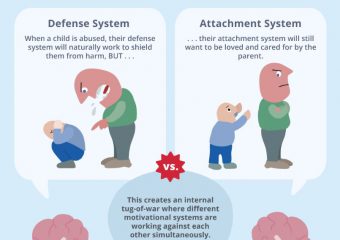One challenge of working with trauma is when a patient’s dissociated “parts” are operating independently . . . . . . or worse, they’re at odds with each other. This can be very distressing for the patient (and lead to a dysregulated nervous system). But the Structural Dissociation Model developed by Kathy Steele, MN, CS, […]
How to Rebuild Secure Attachment After Trauma
When a person experiences trauma, there’s one key factor that can play an important role in whether or not PTSD symptoms develop – and that’s secure attachment. But what happens when someone has never had a connection to a secure attachment figure? How can we help our client build the feelings of safety that are […]
Working with Clients Who Feel "Never Good Enough"
People constantly compare themselves against messages they receive from friends, family, media, and our culture. And those messages often contribute to feelings of “never good enough”: Not attractive enough. Not intelligent enough. Not thin enough. Not successful enough. For many of our clients, they’ve encountered these types of messages from a very young age, and […]
How Does Trauma Affect a Person’s Interaction with Their Child?
Trauma can change the brain . . . . . . but the person who experienced the trauma may not be the only one whose brain changes. In the video below, Ruth Lanius, MD, PhD describes what we’re discovering about the connections between a parent’s trauma and their child’s developing brain. Take a look – […]
Can Fear of Happiness Get in the Way of Healing?
Why is it so hard to get people to follow through on strategies that are good for them? Patient noncompliance can be one of the greatest roadblocks that keeps people from achieving their goals. And I recently came across some new research that might hold a clue to what holds some people back. You see, […]




